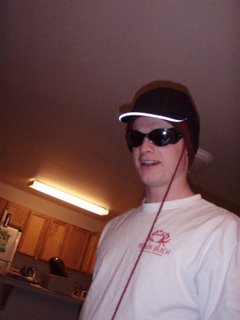Summer comes to Palmer Station
Yes, Julie! It is the summer solstice. The actual solstice (marked by the time when the sun is at its farthest point from the equatorial plane. In practical terms, this means it is the farthest north (In June) or South (in December) along the horizon, thus the reason it is light all the time here right now) is at 7:22 PM eastern time. I think there is a planned polar plunge, so long as that Leopard seal isn't in the area...
I have been avoiding the science that is going on around here, partly because I didn't know about it all, and partly because I'm lazy. But, I have some time to krill, so let's get it on. LTER (Long-term ecological research) is a international research program that monitors ecological changes over a long time scale (What? no....), up until the Principal Investigators proposed the Palmer site, nearly all of this work was terrestrial, with the only exceptions being a couple of freshwater lakes. The palmer LTER was started in the 80's (just like me) by 4 groups- bacteria, phytoplankton, krill and birds. Basically the food web as far as Palmer is concerned. Of course seals, whales play an important part in the ecosystem, but many of them travel through the area during the summer and make year-round monitoring difficult.
By breaking the ecosystem into parts, it is possible to analyze each piece on its own and as part of the whole. We are all asking the same question (Whatsit eating? How fast does it grow?) but in our different ways. Us krillers are using a really cool technique that I am just beginning to understand, to look at how much it's eating. Lab experiments have shown a correlation between the feeding rate and the whole body flourescence (Throw the little guys in acetone to dissolve out photosynthetic pigments, shine light on pigment loaded acetone, measure difracted light to give some measure that indicates how much was ingested. we kn0w the feeding time, we know the size of the creature, we know how much was ingested, we calculate a feeding rate. Neat stuff). Now we are taking this to the field, trying to correlate this ingestion rate that we can calculate from the creatures we catch to the amount of phytoplankton in the water, which we can measure. Some of the details of this might be off-limits, because this is a new technique and we are the only ones doing it. Apparently nobody else is looking at krill on the scale of a school (which can be huge!! we found one yesterday that was about 100 square meters, though they can stretch on for kilometers. Think Macy's day parade full of krill rather than humans.), which makes us the shit.
Enough science, I gotta put my shoes on for a fire drill...


0 Comments:
Post a Comment
<< Home